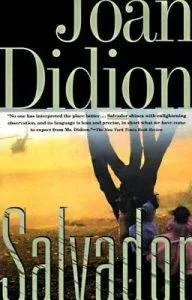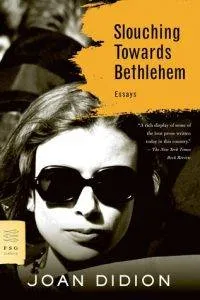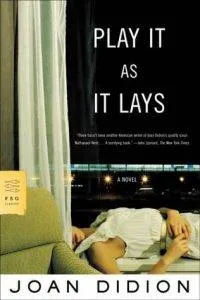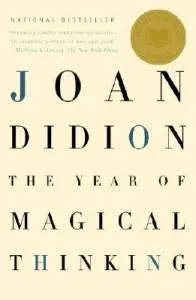
Choose Your Own Joan Didion Adventure
This content contains affiliate links. When you buy through these links, we may earn an affiliate commission.
Joan Didion is one of our most important living writers, one who has written so widely it can be difficult to decide where to start with her work. She has written fiction, essays, memoir, journalism, social and political commentary, and more. She’s known for being part of the “new journalism” movement, a freer, looser style of reporting that reads more like fiction and can include the author’s own experience. But she’s also known for heart-wrenching memoirs and ground-breaking fiction.
So where should a reader start with her? I don’t think there is one right answer to that question. Where you start with Didion depends on what kind of writing you want to read. So I’m suggesting four starting places, with guidelines for where to go from there. It’s a choose your own Joan Didion adventure!
First, decide what kind of reading experience you want to have. There is no wrong answer here (and I promise none of them will lead to a premature and gory death!). Any of the possibilities below will take you on a journey through a wonderful body of writing. If you can’t decide where you want to start, then just jump to Track #1 below:
- If you like travel writing, sharp political commentary, and critiques of U.S. intervention around the world, go to Track #1.
- If you love essay collections that combine personal and journalistic writing, go to Track #2.
- If you love fiction, particularly about troubled women struggling to find meaning in the world, go to Track #3.
 Track #1: Salvador. Published in 1983, this book is an account of Didion’s 1982 journey to El Salvador to report on the social and political turmoil of the Salvadoran Civil War that had begun in 1979. It’s a very short book and a good introduction to her style. Its descriptions of violence and terror make it a difficult read — not unusual for Didion. The book is also not above criticism: Didion writes at times with a confident, sometimes-dismissive breeziness about a society she had known only briefly. But she also captures terror and unrest in trademark devastating fashion.
Track #1: Salvador. Published in 1983, this book is an account of Didion’s 1982 journey to El Salvador to report on the social and political turmoil of the Salvadoran Civil War that had begun in 1979. It’s a very short book and a good introduction to her style. Its descriptions of violence and terror make it a difficult read — not unusual for Didion. The book is also not above criticism: Didion writes at times with a confident, sometimes-dismissive breeziness about a society she had known only briefly. But she also captures terror and unrest in trademark devastating fashion.
- If you loved this book and want more of the same, read Political Fictions, and then go back to the beginning to choose another track.
- If you want a break from nonfiction but are up for more politics, try the novel A Book of Common Prayer, and then proceed to Track #2.
 Track #2: Slouching Toward Bethlehem. Published in 1968, this is a collection of personal and journalistic essays focusing mainly on California. It contains one of her most famous pieces, “Goodbye to All That,” as well as a famous essay about the countercultural Haight-Ashbury district of San Francisco. Her view of California is sometimes a grim one, but it’s captured in writing that is crystal clear. Didion is known for her sharp prose style, and here you will find it at its best.
Track #2: Slouching Toward Bethlehem. Published in 1968, this is a collection of personal and journalistic essays focusing mainly on California. It contains one of her most famous pieces, “Goodbye to All That,” as well as a famous essay about the countercultural Haight-Ashbury district of San Francisco. Her view of California is sometimes a grim one, but it’s captured in writing that is crystal clear. Didion is known for her sharp prose style, and here you will find it at its best.
- If you loved this book and want more of the same, read The White Album. Then go to Track #1 if you want political commentary or Track #4 if you’re up for memoir.
- If you loved this book but want to try some fiction, go to Track #3.
- If Slouching Toward Bethlehem wasn’t for you, it may be that Didion is just not going to be a writer you like. But you might try her fiction with Track #3. If you have already followed that track, jump to Track #4.
 Track #3: Play It as It Lays. Published in 1970, this is another book about the American west, but a novel this time. It tells the story of Maria, 31, whose life is falling apart. Her marriage is failing, her young daughter is in an institution, and she is trying to recover from a breakdown. It’s an angsty novel about despair. It’s also beautifully written and a compelling portrait of a place and time.
Track #3: Play It as It Lays. Published in 1970, this is another book about the American west, but a novel this time. It tells the story of Maria, 31, whose life is falling apart. Her marriage is failing, her young daughter is in an institution, and she is trying to recover from a breakdown. It’s an angsty novel about despair. It’s also beautifully written and a compelling portrait of a place and time.
- If you loved this book and want more of the same, there is no more of the same, sadly. But you might try her novel A Book of Common Prayer, and then go back to the beginning to choose another track.
- If you loved this book specifically because of its exploration of suffering, go to Track #4.
- If you loved this book but want something light and cheery, take a break from Didion and come back to her later.
- If this book wasn’t for you, rest assured that there are people out there who don’t get along with her fiction but love the nonfiction. Then go back to the beginning to choose another track.
 Track #4: The Year of Magical Thinking. A more recent book than the others, this was published in 2005 and tells the story of Didion’s loss of her husband John Gregory Dunne and the hospitalization of her daughter Quintana. It’s an iconic grief memoir about the struggle to survive after it feels that the world has ended. It’s devastating but also brave and beautiful.
Track #4: The Year of Magical Thinking. A more recent book than the others, this was published in 2005 and tells the story of Didion’s loss of her husband John Gregory Dunne and the hospitalization of her daughter Quintana. It’s an iconic grief memoir about the struggle to survive after it feels that the world has ended. It’s devastating but also brave and beautiful.
- If you loved this book and want more of the same, read Blue Nights. Then go on to Track #2 if you want more nonfiction, or Track #3 if you want to try fiction.
- If you loved this book but want a break from writing with a personal focus, go to Track #1.
- If you need something light and cheery after reading this book, take a break from Didion and come back to her later. She doesn’t do light and cheery.
- If this book wasn’t for you, then try her more political/social writing with Track #2 or her fiction with Track #3.










